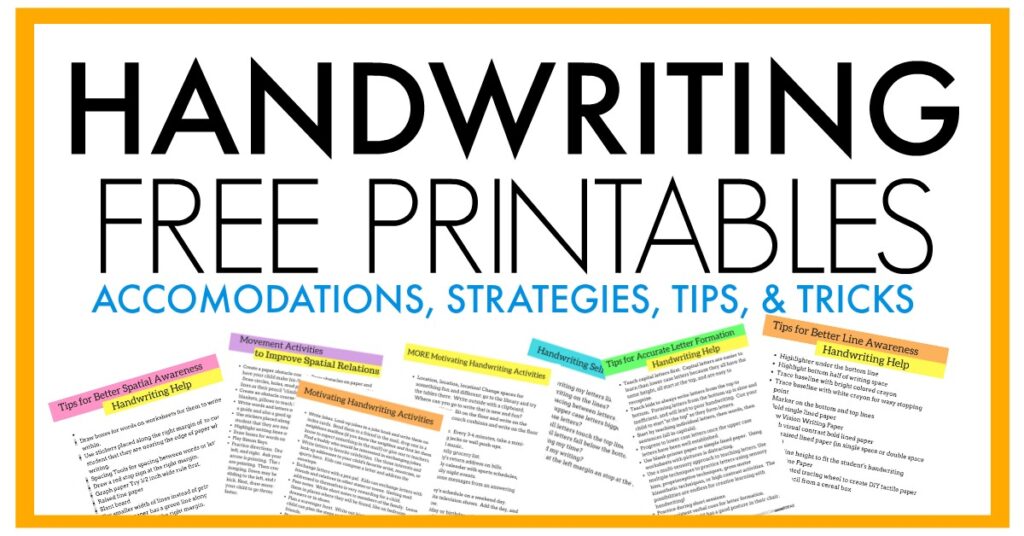If you are looking for answers to common handwriting problems in kids, then this is the place to start for handwriting help, activities to help kids improve the skills they need for legible written work, and success when writing with a pencil. Handwriting problems are common for kids of all ages. There are many reasons for this (read more below) but the good news is that there are ways to address the underlying developmental need and to accommodate or modify to promote improved legibility. You can find all of our handwriting on the tab at the top of the site, but this is a headquarters for specific legibility problem areas.
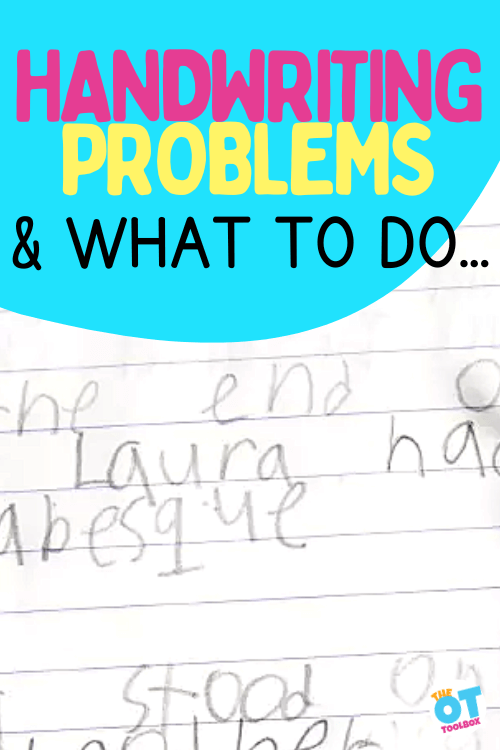
Do you know a child with handwriting struggles?
Handwriting issues typically show up around kindergarten, and the school based OT might tell you that there are underlying skills that are missing: the student can’t form pre-writing lines like diagonals, or have trouble with fine motor skills.
For older students, we see writing trouble show up in the way of letter reversals, poorly formed letters, letters crammed into a writing space, and many other factors that lead to illegible writing.
Does that sound familiar?
A parent might see their child battle the pencil every day as they try to write letters, erase completely, and read the homework they wrote down in school just an hour earlier. The see struggles with writing that lead to missed problems.
A teacher might see several students in OT sessions that reverse letters, write with little regard to the lines, uses a strange pencil grasp, or can not keep up with the rest of the class because of handwriting issues. Here are some important things that therapists wish parents and teachers knew about pencil grasp.
School based OTs and OTAs will work with kids one-on-one to meet handwriting goals and then cringe to see that same child not carrying over skills he’s seemed to master. You might be looking for ways to meet handwriting goals so that your clients can achieve success in the classroom.
Are you a homeschooling parent who knows their smart child isn’t learning as they should be because of handwriting issues?

Common Handwriting Problems
As any school based occupational therapy practitioner knows, handwriting is a functional skill that is needed throughout the school day to complete daily tasks. It contributes greatly to learning, even with the increased use of screens and technology in recent years.
Handwriting struggles are not a new thing. Kids have been writing with a sloppy John Hancock since the very first handwriting tool!
What is new, (and those of us working in schools can say this is true) is that there seem to be more and more occupational therapy referrals for handwriting issues. What might be causing handwriting struggles in students?
Some of the culprits might be less time for handwriting instruction in classrooms, more computer use in the classroom, more kids who come into the school lacking fine motor skills, more awareness of underlying skill areas like visual processing abilities, and higher expectations on our kids in school, after school activity schedules, and faster-paced national classroom standards.
Causes of Handwriting Problems
Most of us occupational therapy practitioners can come up with a list of reasons why handwriting problems are challenging written work legibility. The thing is that many of these issues won’t go away on their own…
- Schools have handwriting curriculum in place, but limited time to truly focus on this aspect of learning.
- Kids start writing before they’ve developed the underlying skills. We see this all the time, especially in preschool when young children are asked to write before they are ready.
- Screens are not going away.
Whether it’s one of these issues that leads to challenges or another reason, we just know that handwriting problems result.
There are so many reasons for the underlying areas that impact handwriting. Things link attention and vision problems can lead to letter omissions.
Visual perception issues can lead to trouble with letter discrimination and copying skills.
Copying issues because of visual motor skills or visual memory result in near point copying challenges as well as far point copying skills.
You’ve probably seen the student with pencil grasp issues. The “tight” or “too hard” grip that leads to hyperextension is a compensatory strategy to increase motor control and dexterity within the task. Due to the variety of pencil grips that children display, it is important to assess the functionality of the grip before attempting to change it.
Another struggle that isn’t always thought about is the impact of posture and handwriting.
Functional Handwriting Problems in School
Where we see the issues at work is when students miss problems on assignments because the teacher can’t read the writing. Or a student can’t read their own writing.
These are the functional problems that impact learning and classroom participation because of handwriting difficulties.
This is where we’ll see the “why” behind a reason for a student’s referral to occupational therapy. We’ll include these skill areas in our handwriting analysis because it’s the function that drives our OT goals.
School based OT practitioners- This list is the “functional handwriting” aspect that we talk about; it’s how handwriting is a daily life skill, or an occupation that our client or student needs to do during their day at school.
Some of the functional writing problems that we see include:
- Missing spelling words due to letters resembling different letters.
- Difficulty reading homework assignments.
- Poor comprehension of learning materials due to illegible writing.
- Frustration and decreased motivation to write.
- Misinterpretation of a child’s understanding or abilities by teachers.
- Incomplete or inaccurate assessment of academic performance.
- Reduced confidence in academic abilities.
- Increased reliance on verbal communication over written expression.
- Difficulty organizing thoughts and ideas on paper.
- Struggles with completing written assignments within allotted timeframes.
- Limited participation in classroom activities requiring written output.
- Challenges with note-taking and study skills.
- Negative impact on overall academic achievement.
- Increased stress and anxiety related to written tasks.
- Reduced independence in completing written tasks.
Let’s take a look at some of the handwriting problems that we might see in written work. These can be the things we see that lead to occupational therapy referrals.
- Poor letter formation
- Poor diagonals in writing, like in letters A, K, V, W, etc. (a pre-writing skill)
- Awkward pencil grasp
- Poor letter size
- Inaccurate line use
- Poor spacing between letters and words
- Letter formation
- Poor use of middle and top writing lines
- Inconsistent letter sizing
- Poor spacing between letters and words
- Difficulty copying written work from a near point or a far point (such as the chalkboard or Smart board)
- Slow writing speed
- Heavy pencil pressure
- Inaccurate margin use
- Trouble writing across the page left-to-right pattern
- Reversal of letters
- Number reversals
- Inconsistency with upper case/lower case letter use
- Trouble carrying over handwriting practice
- Sloppy writing during creative writing tasks
- Trouble erasing completely
- Difficulty paying attention when writing
- Lack of awareness of pencil pressure
- Writes in the wrong order (Left to right)
- Messy writing
- Poor use of margins on the paper
- Cramming letters and words into a given space on worksheets or writing areas
- Filling a given writing space with very large letters (sometimes seen in writing by Autistic individuals)
- Writing over letters (another issue that comes up with Autistic individuals when writing. You might see the individual write a very large letter that fills the given writing space and then they write each following letter on top of the previous letters.)
- Letter omissions when copying written material
- Illegible handwriting can make it challenging for both the child and others to understand what has been written.
- Children may skip or omit certain letters within words, leading to incomplete or unintelligible writing. This can occur when a child struggles with letter recognition or sequencing.
- Some children may have difficulty maintaining consistent letter size and spacing, resulting in uneven or crowded writing. This can impact readability and overall presentation of written work.
If any (or many!) of these problem areas sound familiar, then you are in the right place. This is a place where I can lead you toward tips, strategies, and tools for better handwriting.
Looking for easy handwriting activities to help with underlying skills? There are many on this site.
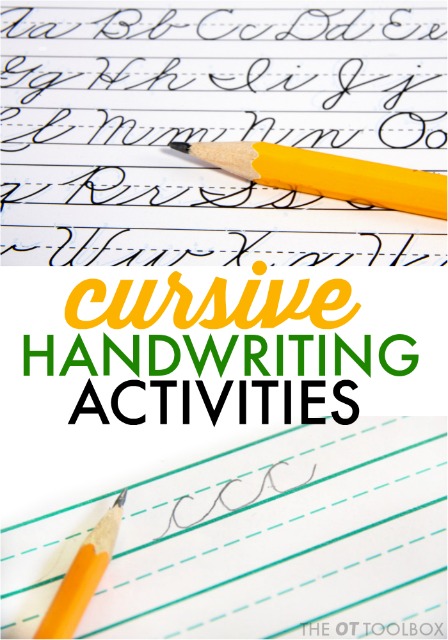
Looking for help with cursive handwriting? I’ve got many creative ways to work on cursive letter formation.
TOOLS FOR How to Teaching Cursive
Looking for ways to help with pencil grasp? There are many ways to work on pencil grasp through creative play ideas.
TOOLS FOR Help with Pencil Grasp
Looking for ways to build the underlying visual motor integration skills needed for handwriting?
TOOLS FOR Improve Visual Motor Skills
Be sure to bookmark this page because I will be sharing more ways to develop the skills needed for consistent, legible handwriting and preparing go-to resources so that you can find all of these handwriting strategies, tips, and tricks in one place.
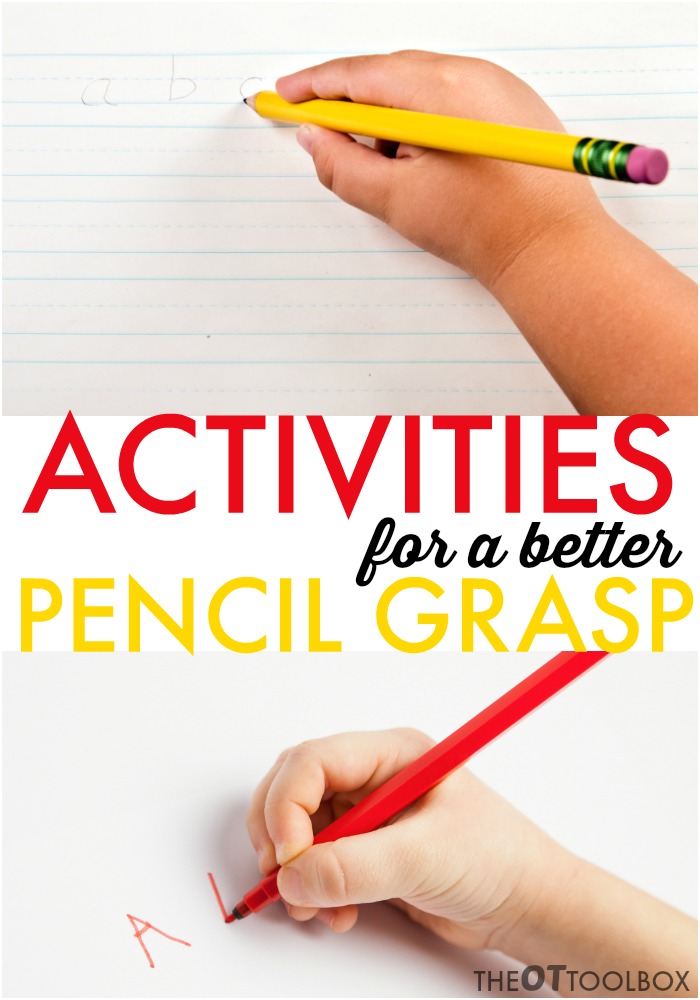
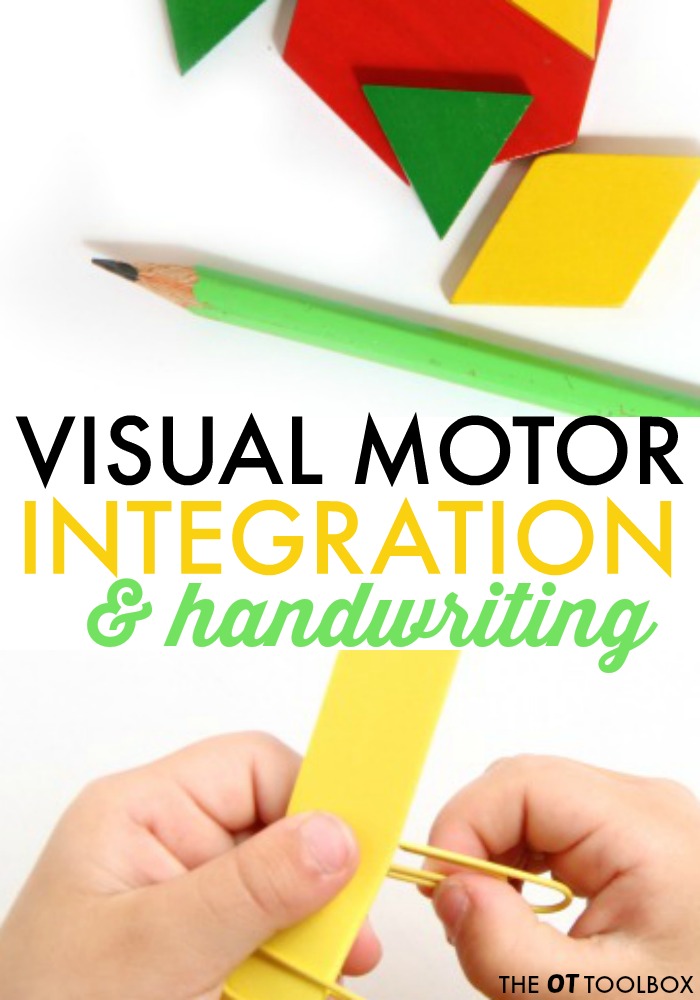
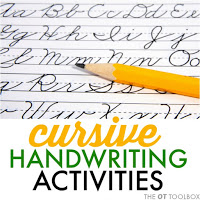

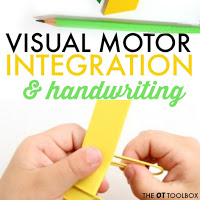

How to address handwriting problems
There are many things we can do and try to target handwriting problems. Trying some handwriting accommodations can be done at home or in the classroom, and it doesn’t mean you need the involvement of an occupational therapy provider. We have many tips for legible writing here on the site, so check out those ideas, too.
Once you try some of these things and you still have struggles with writing, then it might make sense to reach out for OT interventions.
Try some of these strategies to support handwriting issues.
- Try paper with bold top and bottom line and a dotted midline
- Teach students about why we use each line in the writing space, including how “tall” letters reach from top to bottom line & small letters reach from dotted line to bottom line.
- Try using bold lined paper. You can just trace over the baseline with a marker.
- Try using standard wide-ruled notebook paper, have student write on every other line.
- Try using graph paper, with one letter or space per box.
- Tape a visual model of the upper and lower case alphabets to top of desk.
- Use a popsicle stick, index finger as a spacer.
- Try highlighting lines and writing areas

Colleen Beck, OTR/L has been an occupational therapist since 2000, working in school-based, hand therapy, outpatient peds, EI, and SNF. Colleen created The OT Toolbox to inspire therapists, teachers, and parents with easy and fun tools to help children thrive. Read her story about going from an OT making $3/hour (after paying for kids’ childcare) to a full-time OT resource creator for millions of readers. Want to collaborate? Send an email to contact@theottoolbox.com.


